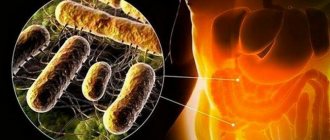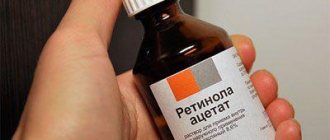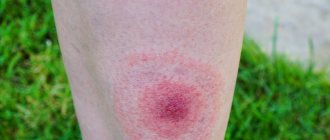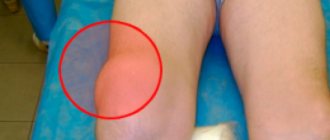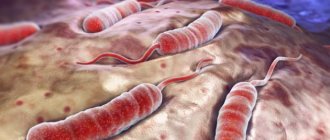Infectious disease specialist
Sinitsyn
Olga Valentinovna
33 years of experience
Highest qualification category of infectious disease doctor
Make an appointment
Tetanus is an infectious disease that affects the nervous system and causes characteristic skeletal muscle spasms. Its causative agent is the bacillus Clostridium tetani, which reproduces by forming spores and is therefore difficult to treat with medication. When this pathogen enters the human body, it produces dangerous toxins that damage peripheral nerves and cause muscle contraction. In the absence of timely treatment, the prognosis is unfavorable.
What it is?
Tetanus is a zooanthroponotic bacterial acute infectious disease with a contact mechanism of pathogen transmission, characterized by damage to the nervous system and manifested by tonic tension of the skeletal muscles and generalized convulsions.
The patient is not contagious to others. Epidemiological measures are not carried out in the outbreak of the disease. Immunity does not develop after illness. Recovery from clinical tetanus infection does not provide protection against new disease. A small amount of tetanus toxin, sufficient for the development of the disease, does not ensure the production of the necessary antibody titers. Therefore, all patients with clinical forms of tetanus must be immunized with tetanus toxoid - immediately after diagnosis or after recovery.
Medicines
Photo: qualitysolutionsnow.com
Diazepam (Seduxen, Relanium) is used to relieve convulsive syndrome. This drug has sedative, hypnotic, anticonvulsant and central muscle relaxant effects. In addition, diazepam helps to increase the threshold of pain sensitivity, which is also important in the treatment of tetanus. During a convulsive attack, diazepam is administered intravenously or intramuscularly; after stopping the attack, this drug can be used in tablet form. The drug is contraindicated in case of renal and liver failure, myasthenia gravis, acute attack of glaucoma, and during pregnancy (1st trimester) and lactation.
The use of muscle relaxants can reduce tonic tension in skeletal muscles. In severe cases, curare-like muscle relaxants, such as pancuronium, are used. These drugs achieve their effect by blocking the neuromuscular synapse, resulting in relaxation of skeletal muscles.
Aminazine is a neuroleptic with antipsychotic, sedative and antiemetic effects. This drug eliminates psychomotor agitation, reduces anxiety, restlessness, and reduces motor activity. For tetanus, it can be used as the process progresses, when clouding of consciousness is observed (hallucinations and delusions appear).
Prevalence
Tetanus is distributed throughout the globe. Large concentrations of the pathogen in the soil have been observed in areas with a humid and warm climate. The incidence worldwide is about 1 million people per year.
Do people die from tetanus? In terms of mortality, the disease is in second place after rabies among all infectious diseases. Its mortality rate, depending on the area, ranges from 40 to 70%. More than 60,000 people die from this disease every year. These statistics do not include unexpressed forms of the disease and unreported cases. In developed countries where tetanus vaccination is mandatory, the mortality rate is 0.1–0.6 per 100,000 population, and in developing countries it is up to 60 per 100,000.
Among children, 80% of cases of the disease occur in newborns, mainly in poor countries (Africa, Latin America, Asia). Among the adult population, 60% are elderly. In rural areas, mortality is higher than in urban areas due to high injury rates.
Causes of infection
Tetanus is caused by Clostridium tetani spores entering a wound. In the absence of oxygen, they transform into active forms. The bacterium itself is harmless. But it produces the strongest biological poison - tetanus toxin, which is second only to botulinum toxin in its toxic effect.
Routes of infection with tetanus:
- puncture, cut or laceration wounds;
- splinters, skin abrasions;
- burns/frostbite;
- fractures and animal bites;
- umbilical wound in newborns.
People who need frequent injections are also at greater risk. Any wound (including bites and burns) increases the risk of contracting tetanus.
The most common causes of death from tetanus are:
- choking as a result of prolonged spasm of the vocal cords or respiratory muscles;
- heart failure;
- spine fracture;
- pain shock.
In children, tetanus is complicated by pneumonia, and at a later date by indigestion and anemia.
The disease tetanus develops exclusively when the microorganism gets on the wound surface.
How does the disease develop?
Unlike causative agents of other infectious diseases, tetanus bacilli do not have invasive properties - they cannot enter the body through intact skin or mucous membranes. A wound is necessary for infection to occur. If tetanus gets into the wound and the necessary conditions are present in it (lack of oxygen and putrefactive processes), the spores germinate into vegetative forms. A local inflammatory reaction does not develop. The tetanus bacillus begins to actively multiply. At the same time, it does not go beyond the wound, only the exotoxin, which is absorbed into the blood and spreads throughout the body. The most significant exotoxin is tetanospasmin, which has a tropism for interneurons (cells of the nervous system).
These are the main cells that modulate the functioning of the nervous system, blocking excessive nerve impulses to motor neurons. When tetanospasmin enters them, interneurons lose their properties, their functional activity decreases, which leads to a decrease in their inhibitory effect on motor neurocytes and the development of seizures. Tetanospasmin also has a stimulating effect on the sympathetic division of the autonomic nervous system, causing an increase in blood pressure and increased heart rate. Tetanolysin, secreted by tetanus bacilli, has a toxic effect on the heart muscle (myocardium).
The main pathogenetic mechanism of tetanus is the development of tonic-clonic convulsions of striated muscles, which leads to the development of a number of physiological disorders in the body:
- Depletion of energy resources of striated muscles in the form of a decrease in the concentration of myoglobin and glycogen in them.
- The accumulation of lactic acid in the muscles and blood, which is formed during active muscular work in conditions of insufficient oxygen, is an anaerobic pathway for the breakdown of glucose.
- The development of metabolic acidosis - the blood reaction becomes more acidic (decrease in blood pH) due to the accumulation of lactic acid in it.
- Suppression of the vasomotor and respiratory center of the medulla oblongata, which can lead to sudden cessation of breathing (asphyxia) or cardiac function (asystole).
- Violation of the functional activity of internal organs - liver, kidneys, gastrointestinal tract.
All these pathophysiological mechanisms for the development of tetanus with a large number of bacterial exotoxins can lead to death due to cardiac and respiratory arrest.
First signs
In humans, the first signs of tetanus are:
- pain in the wound area;
- headache;
- irritability.
Symptoms of tetanus in humans:
- spasm of the masticatory muscles (difficulty opening the mouth);
- spasms of the facial muscles (a “sardonic” smile appears, the lips are stretched, their corners are lowered, the forehead is wrinkled);
- convulsions that cover all the muscles of the body in a downward direction (a person arches, standing on his heels and the back of his head - opisthotonus);
- seizures occur in response to any irritating factor (light, sound, noise).
Convulsive attacks last only a few seconds or minutes, but during this time the person spends a huge amount of energy, becomes very exhausted and exhausted. As the disease progresses, the frequency of attacks increases. The condition is considered severe when they visit the patient almost continuously one after another.
During convulsions, a person does not lose consciousness, he feels severe pain throughout the body, fear, screams, and grinds his teeth. Outside of attacks, he suffers from insomnia.
Symptoms of tetanus in humans
There are 4 periods of the disease: incubation, initial, peak and recovery.
The incubation period for tetanus is usually about 8 days, but can last up to several months. When the process is generalized, the more distant the source of infection is from the central nervous system, the longer the incubation period. The shorter the incubation period, the more severe the disease.
The incubation period for neonatal tetanus ranges from 5 to 14 days on average, sometimes from several hours to 7 days.
The disease may be preceded by headache, irritability, sweating, tension and muscle twitching in the area of the wound. Immediately before the onset of the disease, chills, insomnia, yawning, sore throat when swallowing, back pain, and loss of appetite are noted. However, the incubation period may be asymptomatic.
The initial period lasts up to 2 days. The earliest symptom is the appearance of dull nagging pain in the area of the entrance gate of the infection, where by this time complete healing of the wound can be observed. Almost simultaneously or after 1-2 days, trismus appears - tension and convulsive contraction of the masticatory muscles, which makes it difficult to open the mouth. In severe cases, the teeth are clenched tightly and it is impossible to open the mouth.
The peak period of the disease lasts on average 8-12 days , in severe cases up to 2-3 weeks. Its duration depends on the timeliness of seeing a doctor, the early start of treatment, and the availability of vaccinations in the period preceding the disease.
A tonic contraction of the masticatory muscles (trismus) and convulsions of the facial muscles develop, as a result of which the patient develops a sardonic smile. risus sardonicus: the eyebrows are raised, the mouth is stretched wide, its corners are lowered, the face expresses both a smile and a cry. Next, the clinical picture develops with the involvement of the muscles of the back and limbs (“opisthotonus”).
There is difficulty swallowing due to spasm of the pharyngeal muscles and painful rigidity (tension) of the muscles of the back of the head. Rigidity spreads in a descending order, affecting the muscles of the neck, back, abdomen and limbs. Tension appears in the muscles of the limbs and abdomen, which becomes hard as a board. Sometimes there is complete stiffness of the torso and limbs, with the exception of the hands and feet.
Painful cramps occur, initially limited, and then spreading to large muscle groups, which last from a few seconds to several minutes. In mild cases, seizures occur several times a day, in severe cases they last almost continuously.
Convulsions appear spontaneously or with minor irritations (touch, light, voice). During convulsions, the patient's face becomes covered with large drops of sweat, becomes puffy, turns blue, and expresses suffering and pain. Depending on the tension of a particular muscle group, the patient’s body can take the most bizarre poses. The patient bends on the bed into an arched position, resting only on the heels and the back of the head (opisthotonus). All muscles are so tense that you can see their outlines. The legs are stretched out, the arms are bent at the elbows, the fists are clenched.
Some patients prefer to lie on their stomach without their legs, arms and head touching the bed. Patients experience fear, grind their teeth, scream and moan in pain. During the period between spasms, muscle relaxation does not occur. Consciousness is usually preserved. Patients sweat profusely. Persistent insomnia occurs. Apnea, cyanosis, and asphyxia are observed.
Muscle spasms lead to difficulty or complete cessation of the functions of breathing, swallowing, defecation and urination, circulatory disorders and the development of congestion in the internal organs, a sharp increase in metabolism, and cardiac dysfunction. The temperature rises to 41-42 °C.
The recovery period is characterized by a slow, gradual decrease in the strength and number of cramps and muscle tension. May last up to 2 months. This period is especially dangerous for the development of various complications.
Classification
- Depending on the location of the lesion:
- Local tetanus (paralysis is limited to one or several muscle groups in the wound area and is typical for previously vaccinated people);
- Generalized tetanus (convulsions involve all muscle groups).
- According to the severity of the course (assessed in patients with a generalized form):
- Mild degree;
- Moderate degree;
- Severe degree;
- Extremely severe.
- Forms of tetanus depending on the entrance gate:
- Traumatic (after operations, injuries, childbirth, burns, wounds and frostbite);
- Inflammatory-necrotic (in patients with disintegrating tumors, ulcerations of the skin and mucous membranes, bedsores);
- Cryptogenic (the entrance gate is not defined, the incubation period is extended to several months, the wound has long healed and the patient has forgotten about it).
Tetanus in children
Tetanus in childhood occurs much more often, especially for boys, which is associated with the mobility of children and the frequency of minor injuries in which skin lesions become infected with soil. The duration of the incubation period is somewhat shorter than in adults, prodromal manifestations are usually smoothed out, only in some young patients tetanus causes pain and tension in the area of the primary wound. More often, mild symptoms of the toxic influence of the pathogen occur, they are manifested by irritability, capriciousness, unreasonable anxiety of the child, loss of appetite, but usually parents remember this later, when collecting an anamnesis, since at first they regard the child’s condition as a slight malaise for some other reason. Therefore, the first sign to suspect tetanus is trismus - a spastic contraction of the masticatory muscles that prevents the child from opening his mouth and swallowing.
In general, tetanus in children occurs with symptoms typical of this infection, but the increase in manifestations occurs more rapidly. Tetanus toxin spreads along the nerve fibers, which in a child are much shorter in length; accordingly, damage to the spinal cord and reticular structures of the brain occurs over a shorter period. Muscle tension from the masticatory muscles spreads to the facial muscles, giving the face an expression that simultaneously resembles crying and laughter - a sardonic smile. Next, the muscles of the neck are involved, then the torso and limbs; by this period, convulsions occur, which intensify under the influence of any external irritants and are accompanied by significant sweating. Tetanus causes severe suffering to the child, especially with the development of opisthotonus, when the body bends sharply backwards, and breathing becomes difficult; the child experiences not only severe pain, but also fear.
In the phase of advanced symptoms, tetanus is most dangerous due to complications such as paralysis of the intercostal muscles and diaphragm, which can lead to respiratory arrest, as well as paralysis of the heart muscle with circulatory arrest.
Tetanus in children, in terms of the duration of the main manifestations, can drag on for several weeks, but usually the peak period of the disease after 5-6 days flows into a phase of subsiding of symptoms, cramps become weaker, but muscle tension remains for a long time, recovery usually lasts up to a month or more. During this period, tetanus is dangerous due to complications that develop due to prolonged tissue hypoxia and hemodynamic disturbances - pneumonia, thromboembolic syndrome, sepsis.
One of the special forms of the disease - neonatal tetanus - develops when the pathogen enters the umbilical cord or umbilical wound, while tetanus always occurs in a generalized form and is characterized by an extremely severe course, the incubation period can be reduced to a few hours. Due to a spasm of the masticatory muscles, the child is not able to suck milk; the involvement of other muscle groups develops rapidly; convulsions can occur by the end of the first day. According to various data, neonatal tetanus is fatal in 50-95% of cases.
Manifestations of vaccination reactions
After vaccination against any infection, vaccine reactions or so-called side effects often develop, since vaccination, especially one carried out for the first time in life, is always a serious stress - the body begins to synthesize antibodies in an enhanced mode. Despite the low reactogenicity of the tetanus vaccine, adverse reactions may occur. If vaccine reactions do not threaten the life of a child or adult, their occurrence is considered normal. As a rule, tetanus vaccination is easily tolerated by patients. Most often local reactions develop, which include:
- Hyperemia of the vaccine injection site;
- Infiltration (compaction) at the injection site;
- Formation of a “bump” at the injection site.
There is no need to panic about the occurrence of local manifestations from vaccination. These reactions resolve on their own within a few days. It is also possible that general symptoms may occur: fever, fatigue, lethargy and irritability, general weakness and drowsiness.
Explanation of common vaccine reactions:
- The vaccine hurts
Many patients, after receiving the vaccine, feel soreness at the injection site or say that the injection hurts. If you follow all the recommendations in the post-vaccination period, the pain from the tetanus shot disappears on its own within two to three days. The appearance of pain is due to the vaccine entering the fatty tissue, which slows down the entry of the drug into the blood and causes local inflammation (pain, swelling, hyperemia). In this case, it is recommended to take NSAIDs (ibuprofen, indomethacin).
- Arm hurts
The occurrence of pain in the arm is observed after injection under the shoulder blade or in the shoulder and is also explained by the penetration of tetanus toxoid into the subcutaneous tissue. The drug contains aluminum hydroxide, which provokes severe local inflammation, which will disappear after the vaccine is completely absorbed into the bloodstream. To speed up absorption, it is recommended to treat the injection site with troxevasin ointment, and to relieve pain, take NSAIDs.
- Formation of a “bump”
It is also explained by the partial penetration of the drug, in particular its component - aluminum hydroxide, into the subcutaneous tissue, in which the circulatory network is poorly developed and the vaccine is slowly absorbed. At the injection site, the formation of a “bump” in the subcutaneous and muscle layers is a kind of drug depot, allowing it to enter the bloodstream slowly and gradually, and not all at once, which promotes the formation of antibodies. If the entire dose of the drug immediately penetrates the blood, then all foreign cells will be destroyed, and the necessary antibodies will not have time to form. Complete absorption of the vaccine and the disappearance of the “bump” occur after one to two months.
- Swelling at the injection site
It is not considered a pathology and is explained by the development of local inflammation (redness, swelling, slight pain). Normally, swelling should not exceed 2 cm, and hyperemia should not exceed 8 cm.
- Temperature increase
A rise in temperature to 39.5 degrees, which lasts no more than three days, is considered normal. If there is a jump in temperature to 40 degrees or more, the reaction to the vaccine is regarded as hypertoxic, which requires immediate medical attention.
Other rare adverse reactions include the development of bronchitis, rhinitis, pharyngitis and changes in peripheral blood: leukopenia and agranulocytosis. Also, vaccination may be accompanied by disruption of the cardiovascular system, which is manifested by increased heart rate and reactions from the digestive tract: increased salivation, nausea, loose stools, vomiting. Rare side effects include seizures, partial paralysis, and aphonia (loss of speech).
Complications
After administration of the vaccine, complications may develop in two cases. In the first variant, complications are caused by a tendency to allergic reactions and develop in an immediate manner with the appearance of skin itching, skin rashes (red papules raised above the skin, merging with each other), Quincke's edema or the development of anaphylactic shock. Complications caused by delayed-type hypersensitivity manifest themselves in the form of intestinal dysbiosis and serum sickness.
The second option for the development of complications after vaccination against tetanus is associated with violation of the rules of asepsis during vaccination or with violation of the storage conditions of the vaccine:
- Abscess/cellulitis formation
Hyperemia, sharp pain, fluctuation at the injection site with a simultaneous high rise in temperature and the appearance of symptoms of intoxication.
- Neuritis
Develops when a vaccine is administered and accidentally enters a nerve. Accompanied by dysfunction of organs whose innervation is provided by the damaged nerve. Pain occurs under the shoulder blade, in the arm or thigh, and weakness appears when moving.
Consequences
Severe complications of tetanus with a high probability of death are asphyxia and cardiac arrest. In addition, tetanus can contribute to the occurrence of bone fractures, muscle ruptures, and compression deformation of the spinal column. A common complication of tetanus is pneumonia, and coronary spasm and myocardial infarction may develop.
During recovery, contractures and paralysis of the third, sixth and seventh pairs of cranial nerves are sometimes noted. In newborns, tetanus can be complicated by sepsis.
Complications
Complications of tetanus that appear after the disease are directly related to the patient’s condition. Simply put, difficulties in breathing lead to problems with the lungs, stagnation of the contents occurs, which leads to pneumonia.
Cramps that constrain all muscles cause them to rupture; patients may have fractures of bones, joints, vertebrae, and ligament ruptures. Curvature of the spine may occur. Another complication of tetanus is a heart attack.
Sepsis, abscess, pyelonephritis and other infections of secondary origin may begin to develop.
For children, tetanus is in most cases a fatal disease. An adult recovers more often, but it all depends on the severity of the disease.
Diagnostics
With tetanus, laboratory diagnostics are practically meaningless, since at the onset of the disease the toxin is not detected in the blood, antibody titers do not increase (even a lethal dose of the toxin is an insignificant antigenic irritant and does not cause an immune response). The detection of antitoxic antibodies can only indicate a history of vaccinations. Sometimes bacteriological methods are used (histological examination of tissues obtained during surgical treatment of wounds, microscopy of fingerprint smears, inoculation of wound discharge under anaerobic conditions in nutrient media).
However, early diagnosis of this disease is possible only with a careful collection of epidemiological history (injuries, burns, wound infections, surgical interventions received within a time frame that corresponds to the incubation period) and with the active detection of symptoms of the prodromal period. At the height of the disease, there are no problems with diagnosis due to the presence of pathognomonic symptoms. At the same time, there are no deviations from the internal organs, meninges, cerebrospinal fluid, blood and urine.
Preparing for the test
You do not need to take any precautions, except that you should not eat anything in the morning before taking the test. Also, the previous evening you should avoid emotional stress and various physical activities.
After analysis and evaluation of the results, which should reveal a protective level of antibodies in the blood, vaccinations are given according to the vaccination calendar. After some time, revaccination is prescribed.
Treatment of tetanus
If tetanus is suspected, children and adults are subject to immediate hospitalization in the intensive care unit (resuscitation) due to the possibility of disruption of vital body functions or in surgical departments. Patients should be placed in separate rooms, isolated as much as possible from external stimuli that can provoke convulsions (sound, visual, tactile).
The main goal of treatment for tetanus is the administration of antitetanus serum (tetanus immunoglobulin), tetanus toxoid, neutralization of the toxin circulating in the blood and maintenance therapy. To relieve seizures, neuroleptics, anticonvulsants, and muscle relaxants are prescribed - drugs that reduce the tone of skeletal muscles.
Treatment of children in a hospital with an uncomplicated course is on average 14 days, with a complicated course - 1 month. Dispensary observation of those who have recovered from tetanus is carried out for 2 years. In this case, observation by a neurologist and clinical examinations are carried out in the first 2 months - once a month, then - once every 3 months. According to indications, consultations with a cardiologist and other specialists are carried out.
Prevention
In order for the prevention of tetanus to be complete, preventive measures are applied in two directions: firstly, it is necessary to carry out the prevention of various types of injuries and specific prevention methods.
Tetanus vaccination is considered a very important method in the process of preventing tetanus. To create immunity against this disease, routine immunization is carried out. Tetanus toxoid is used for this purpose. It is administered to children from three months, it is part of the DTP vaccine (complex vaccine against diphtheria, tetanus, whooping cough), later the tetanus vaccination is made in the form of ADS-M, ADS (complex vaccine of diphtheria + tetanus) or in the form of AS toxoids . Tetanus vaccination is the most effective way to prevent the disease. If a patient is at risk of developing tetanus, he is immediately given emergency prophylaxis using anti-tetanus serum or anti-tetanus immunoglobulin. It contains antibodies to the toxin. It is important to consider that it is not always possible to prevent tetanus through passive immunization. To do this, patients are injected with tetanus toxoid.
Prevention of nonspecific tetanus is carried out in order to prevent cases of household injuries, as well as injuries at work. It is also necessary to ensure sterility during operations to prevent infection of wounds after surgery. All puncture, cut wounds, frostbite, burns and other injuries should be immediately properly treated and bleeding stopped.
After receiving the tetanus vaccine
After vaccination against tetanus, the body begins to produce antibodies that provide protection against this disease. The formation of antibodies occurs intensively during revaccination, and in the case of primary immunization it is slower and requires the administration of several doses of the vaccine at intervals. The synthesis of protective immunoglobulins - antibodies can be accompanied by the development of vaccination reactions to varying degrees of severity, therefore, after vaccination it is necessary to follow a number of recommendations.
Prohibited:
- Drinking alcohol after a tetanus vaccination for three days and 3 days before vaccination;
- Consumption of allergenic products (citrus fruits, honey, fish, seafood, baked goods, confectionery, sweet carbonated drinks, coffee, chocolate);
- Taking water treatments using a washcloth, detergents, aromatic oils and foam;
- Sports and heavy physical activity for 3 days;
- Visiting a bathhouse, swimming pool, sauna;
- Visits to public places (shops, clinics, places of entertainment).
After vaccination you can:
- Take a shower;
- Dress the injection site with sterile materials (infection prevention);
- Take antihistamines (as recommended by a doctor);
- Follow a diet (drink plenty of fluids, lactic acid products, fresh vegetables and fruits, cereals).
Vaccination schedule
For routine immunization of children and adults, a combined DTP vaccine is used, which contains tetanus, diphtheria and whooping cough toxoids. Tetanus vaccination is included in the national immunization schedule, and the vaccination schedule differs between children and adults.
Vaccination of children
How many tetanus vaccinations are given to children? In total, the child is given 5 doses of the DTP vaccine; after completing the course of immunization, the child develops a stable immunity that lasts for 10 years. Children are vaccinated in the following age periods:
- At three months of age;
- At 4.5 months;
- In six months;
- At one and a half years;
- At 6–7 years old.
To maintain immunity, revaccination is necessary every 10 years. The first revaccination is carried out in adolescents at 14 or 16 years of age.
Vaccination of adults
Tetanus vaccination for adults is carried out in accordance with the order of the Ministry of Health of the Russian Federation No. 174 of May 17, 1999. Tetanus vaccine schedule for adults:
- 18 – 27 years old;
- 28 – 37 years old;
- 48 – 57 years old;
- After 58 every 10 years.
If an adult has been vaccinated against tetanus before, then every decade a revaccination is carried out with one dose of tetanus toxoid. In case of no previous immunization against infection, 2 doses of tetanus toxoid are administered, keeping a month's interval between their administrations. The third and final vaccination dose is administered after 12 months, after which the countdown begins and revaccination is repeated every 10 years.
The following categories of citizens are subject to mandatory revaccination against this disease:
- Students;
- Military personnel;
- Workers - construction workers;
- Railway workers;
- Diggers.
In addition, all adults, without exception, are immunized if they live in an epidemiologically unfavorable region for tetanus.
Emergency vaccination
Emergency immunization against tetanus is carried out in the absence of information about the time of the last vaccination (the patient does not remember, there is no entry in the outpatient card, the patient is unconscious) or after 5 or more years have passed since the last vaccination. Indications for emergency administration of the vaccine:
- Frostbite and burns with extensive skin damage;
- Any wounds (stab, gunshot, chopped);
- Animal bite (both wild and domestic);
- Wound suppuration;
- Gastrointestinal operations;
- Childbirth outside the walls of a medical institution (at home, in a car, on the street);
- Criminal abortions.
Vaccination of pregnant women
It is prohibited to vaccinate (against any infection) in the first and second trimesters of pregnancy. But if an emergency arises, the expectant mother is immunized, but not through the introduction of a vaccine, but with the help of immunoglobulins. Women planning a pregnancy are recommended to get vaccinated at least a month before pregnancy. In this case, the newborn will receive antibodies from the mother, the effect of which persists during the first two months of life.
If less than 5 years have passed since the last revaccination, you should not get vaccinated against tetanus. But in the event of an expected birth in an area that is epidemically unfavorable for tetanus, pregnant women should be revaccinated 14 days before birth.
Rules for administering the vaccine
Where do they inject for tetanus? Vaccine administration (injection site) differs between adults and children. The vaccine is administered intramuscularly; if tetanus toxoid penetrates the subcutaneous fat layer, the development of an abscess or phlegmon cannot be ruled out.
For children under three years of age, the vaccine is administered into the upper third of the thigh along the front surface (in this place the fatty tissue is weakly expressed). For older children and adults, a tetanus injection is given in the shoulder area (deltoid muscle) or under the shoulder blade. It is extremely undesirable to inject tetanus toxoid into the buttock region, since the subcutaneous tissue is well developed in the buttock area, and the muscle layer is located deep. Injecting a vaccine into the buttock risks not only prolonged pain at the injection site, but also a high risk of complications.

